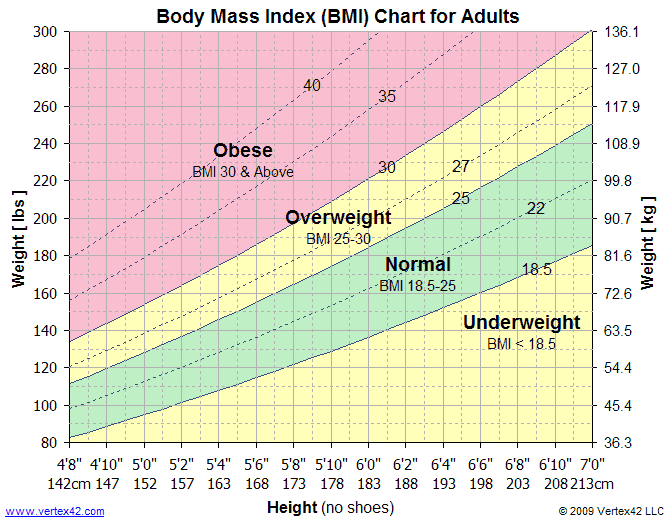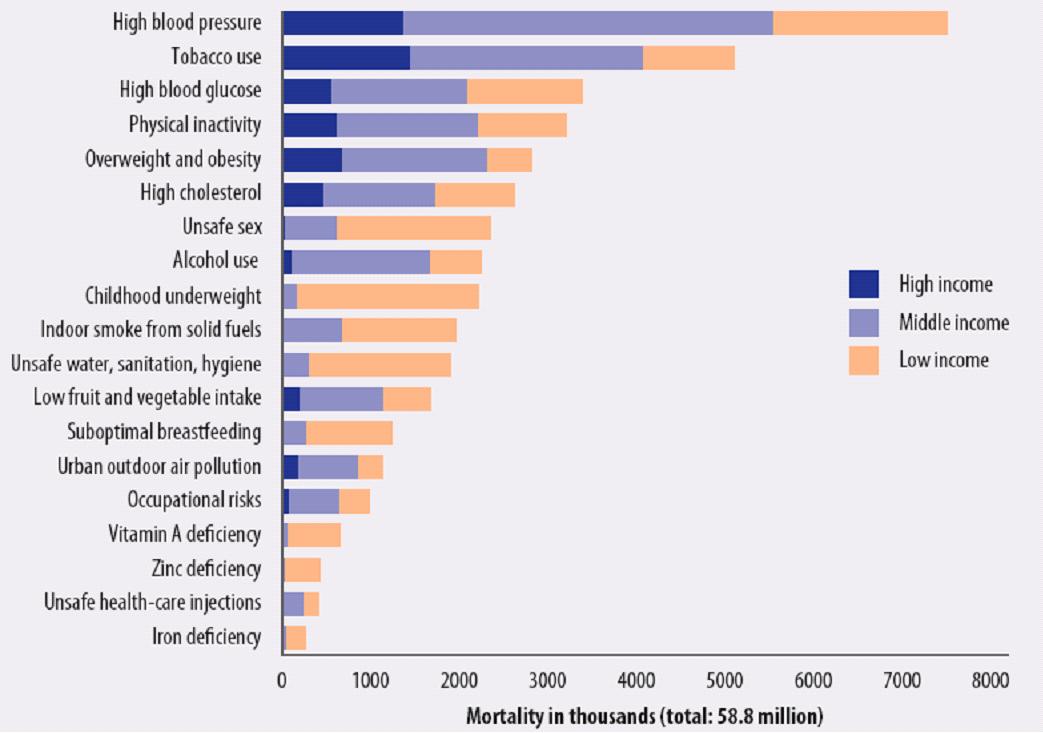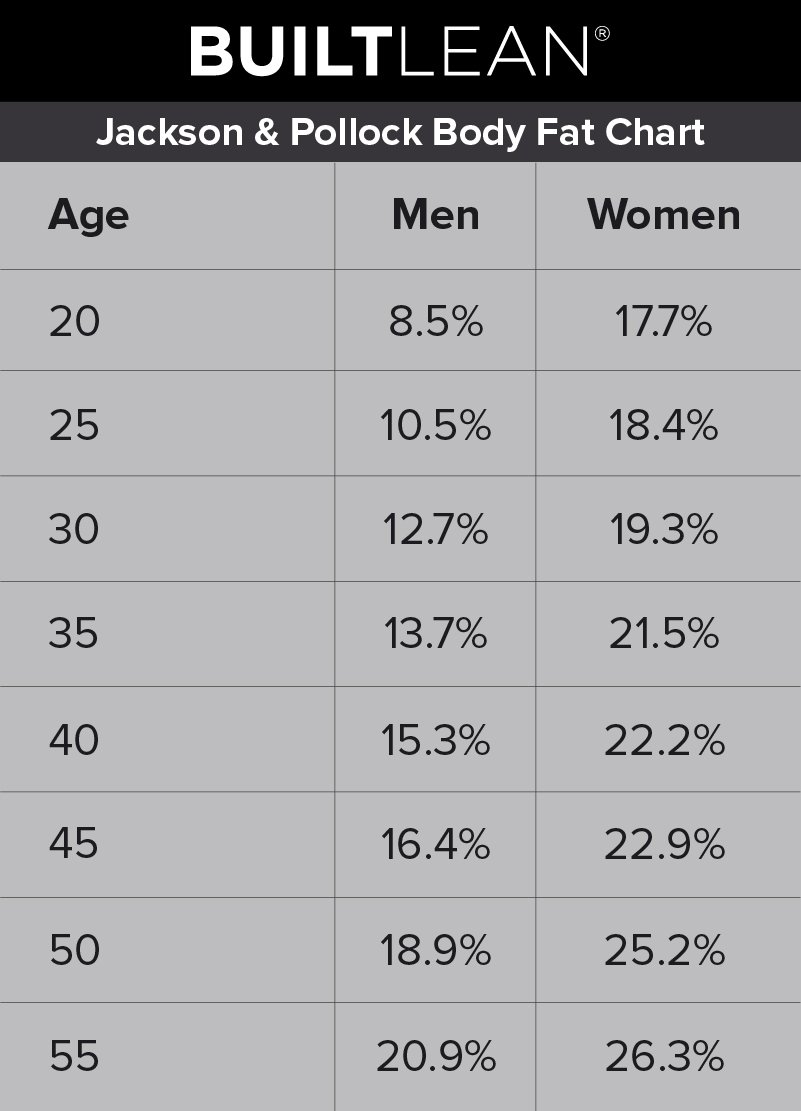In my previous post, I discussed my most recent blood lipid panel and discussed how much improved my triglycerides and HDL are compared to anything I have had in the last 30 years.
For review here were my most recent Lipid Panel numbers:
- Total Cholesterol 265 mg/dl or 6.85 mmol/l
- HDL Cholesterol 62 mg/dl or 1.60 mmol/l
- LDL Cholesterol 183 mg/dl or 4.73 mmol/l
- Triglycerides 87 mg/dl or 0.98 mmol/l
Triglycerides are supposed to be below 150. They are 87. HDL is supposed to be greater than 40. It is 62. More recent standards now focus not only on the absolute cholesterol levels but on the ratio of total cholesterol to HDL. Here are the guidelines:
Total cholesterol-to-HDL ratio and heart disease risk:
- 3.4 signifies half the average risk for men (that would be 3.3 for women).
- 5 signifies average risk for heart disease for men. (4.4 for women).
- 9.6 signifies about double the average risk for men. (7 for women).
See Making sense of cholesterol tests.
My ratio is 4.3 which indicates a below average risk for heart disease even though I have high total cholesterol and LDL.
Now, as I mentioned in my last post, my test was taken three days into a water only fast and after eating a ketogenic diet for some days prior to the fast. As explained then this would likely artificially boost my LDL numbers. So, after over a week of normal eating, I took a home test of my cholesterol levels. I read 225 for total cholesterol and 65 for HDL, making my LDL out to be 160. But, I don’t trust my reading of the test so I won’t vouch for the accuracy of that reading. I do think it confirms that my LDL lowered a good bit from my lab test, but that is all I think I can really say from that home test. But, if accurate, my ratio would be 3.4 signifying half the average risk for heart disease. I require a new lipid panel to know for sure.
Here are some charts pulled from a talk by Ivor Cummins on the Primary Causes of Early Mortality.
The first one is based on the data I give above using data from the well known Farmington Heart Study:
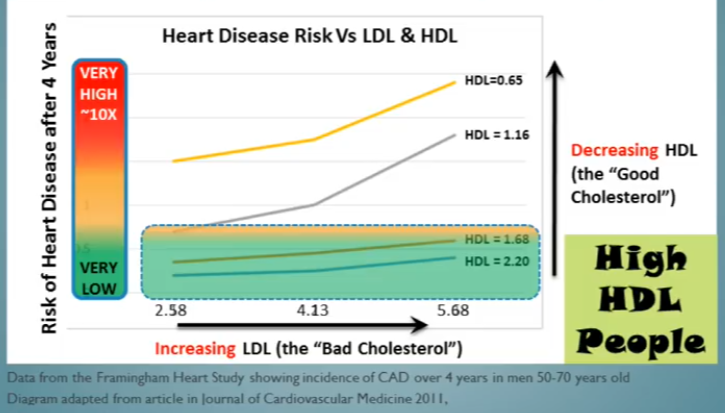
Note the use of European measures in this graph. In my case with an HDL of 1.60 and LDL of 4.73, I am right at the top of the very low range for any risk of heart disease.
But the cholesterol ratio is not the only factor to consider. Triglyceride levels are also predictive. The lower the triglycerides, the better. Here is another graph from Ivor’s talk:
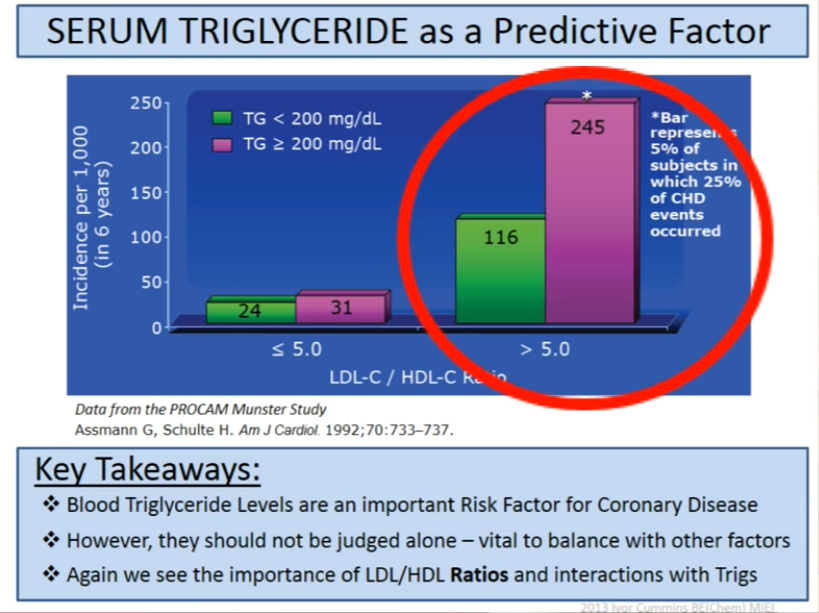
This data is from the The Münster Heart Study (PROCAM)
This graph uses the ratio of LDL to HDL instead of the total cholesterol to HDL. In my case that would be 2.95. Individual with a high ratio, but relatively low triglyceride levels below 200 had only half the number of Cardiovascular Heart Disease events as those with high triglycerides. However, if your ratio is good and your triglycerides are low, then you risk is much smaller.
I did show very high LDL levels in my recent lab test. From my home test it would seem that they are still high, if not as high as during my fast. Regardless, it does seem that my heart disease risk is now much lower than it has been in many years due to the much improved HDL and triglyceride levels.
One last graph before I go. It is well known that not all LDL cholesterol is alike. LDL is used to transport fat around the body, particularly from the liver to cells for use or storage. LDLs that are “full” are large and buoyant. These large and fluffy LDL particles cannot penetrate arterial cell walls to form plaques. As such, they are not “bad” at all. The truly bad cholesterol are LDLs that have released their stores and turn into small dense LDLs that are the ideal size to penetrate small arterial injuries or cuts and embed themselves causing an immune response and the formation of arterial plaque that calcify and harden your arteries.
There is a relationship between triglyceride levels and LDL particle size. In general, the lower your triglycerides, the greater the percentage of LDL is of the large buoyant kind. And that is good. Given my rather low triglycerides, I have reason to believe that my heart disease risk is even lower than indicated by my cholesterol ratio alone.
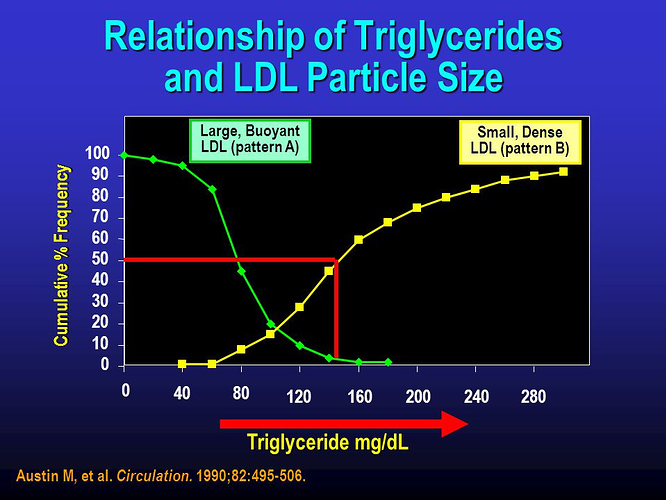
This graph a prettier version of one in the original article (Atherogenic Lipoprotein Phenotype A Proposed Genetic Marker for Coronary Heart Disease Risk).
